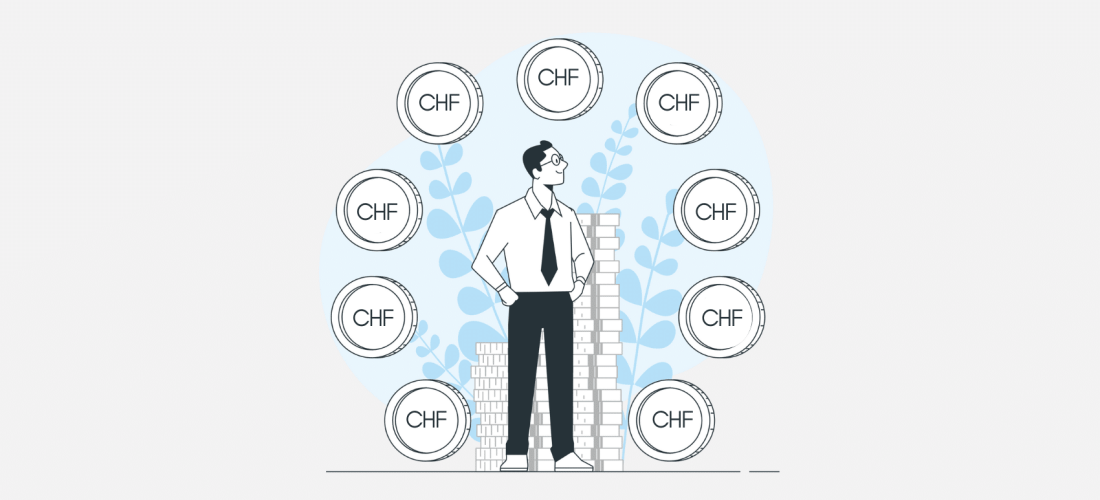Introduction
Retirement marks a major transition in life — the shift from a period of regular employment income to a new stage where financial security depends on the savings accumulated over the years. In Switzerland, although the three-pillar pension system provides a solid foundation, many retirees still find a gap between their actual financial needs and the benefits paid by the AVS and their pension fund.
The retirement income plan stands out as a comprehensive solution that combines flexibility, security, and growth potential. This financial product allows you to build up a capital progressively (or through a single premium payment) during your working life, then convert those savings into regular monthly income once retired. In this article, we explain in detail how this mechanism works, its advantages, and how it can fit seamlessly into your overall retirement planning strategy.
What is a retirement income plan?
A retirement income plan is a type of life insurance product designed to generate regular income throughout your retirement years. Unlike a simple savings account or a one-time investment, this plan follows a structured approach divided into two distinct phases.
The core principle is based on a balanced approach between two seemingly opposing goals: growing your capital through financial markets while ensuring sufficient security to protect your savings. This dual strategy is achieved through a smart allocation between growth-oriented capital (investments in equities and funds) and secure capital (fixed-rate investments).
The main objectives of an income plan are multifaceted: to build capital progressively and flexibly, benefit from the growth potential of financial markets, protect part of your savings from market fluctuations, generate regular monthly income during retirement, and take advantage of potential tax benefits depending on the chosen structure.
How does an income plan work?
An income plan is based on a simple logic: first, build solid capital, then transform it into regular, sustainable income. It is therefore structured around two main stages: the investment (or accumulation) phase and the payout (or distribution) phase.
1. Investment phase (accumulation)
The investment phase corresponds to the period during which you build your capital. You make regular or one-time payments, or a single premium, depending on your financial capacity, to fund a portfolio divided between secure investments and growth-oriented assets (e.g., investment funds or ETFs). This stage can last several years, with a clear goal: to grow your savings through compounding and market performance.
The longer it lasts, the greater the potential for growth and stability. This phase offers total flexibility. In general, you can adjust your payments, change the balance between security and return, or extend the term to suit your situation. The entry amount generally remains affordable, so you can tailor your plan to your resources. This is a key step, because the solidity of the accumulated capital directly determines the level of income you'll receive later on.
2.2 The payment phase
Once the capital has been built up, the payout phase transforms your savings into regular income, often paid monthly. Payments can begin after a few years, depending on the chosen plan. The amount depends on the investment performance, the proportion of secure capital, and the duration set for the withdrawals. The goal is to create a stable cash flow that complements your retirement income without depleting your capital too quickly.
Several options are available depending on your needs: a fixed payment based on the secure capital, an income derived from interest, or a proportional payment adjusted to the portfolio’s performance. This system is flexible — you can modify the duration, frequency, or amount of payments. Such adaptability makes the income plan a practical tool for maintaining a balance between security, profitability, and financial freedom.
Investment mix: between security and yield
The heart of an income plan lies in an intelligent balance between two types of capital with distinct but complementary objectives.
1. Growth-oriented capital
The growth-oriented capital represents the portion of your investment intended to generate long-term growth. It is generally invested in dynamic assets such as equities, mixed funds, or high-yield bonds.
These investments offer higher performance potential but also involve greater exposure to market fluctuations. The goal is to boost the overall profitability of the plan while benefiting from positive financial market trends. This portion of the capital is suited to investors willing to accept a certain level of risk in exchange for higher returns. Its share within the plan is adjusted according to your profile: the larger it is, the higher — yet more variable — your future income may be. When managed effectively, this capital serves as a growth engine, helping offset inflation and enhance long-term income potential.
2. Secure capital
The secure capital corresponds to the portion of your plan that is guaranteed by the insurer. In other words, the invested amount benefits from a contractual protection against market fluctuations. The insurer commits to maintaining a minimum capital value, typically around 80 to 100%, depending on the terms of the contract. In return, this security limits the potential for higher returns. This capital is primarily invested in conservative assets such as bonds or fixed-rate instruments to preserve the guarantee while generating steady income.
This part of the plan aims above all to ensure the stability and continuity of payments, even during periods of stock market volatility. It serves as the foundation for the entire income strategy, reassuring investors committed to capital preservation. By combining it with yield-oriented capital, the plan achieves a balance: one part of the portfolio protects your savings, the other supports the growth needed to maintain the purchasing power of your income over the long term.
Benefits of an income plan
The main advantage of an income plan lies in its financial stability. It allows you to convert your capital into a steady stream of income without the need for active investment management. The combination of a guaranteed capital portion and a growth-oriented portion creates a balance between security and performance — ideal for retirement planning or generating supplemental income. The payments are flexible: you can choose the frequency, duration, and amount while keeping the option to adjust these parameters as your needs evolve.
Another major advantage is the professional management. The funds are managed by experts who optimize the allocation between secure and dynamic assets. This ensures a consistent strategy tailored to your profile and market conditions. Such a plan can also provide tax deductions within the framework of the 3b pillar (depending on the canton) and offers clear visibility on your future income — making it a simple and effective long-term solution.
Limitations of the income plan
An income plan is not without its constraints. The overall return may be lower than that of an investment fully exposed to the markets due to the secure portion (the higher this portion, the higher the management fees). Income can also fluctuate depending on the performance of the growth-oriented portion. In other words, the greater the level of security, the more limited the potential gain — a necessary trade-off to protect your capital.
Furthermore, like any product that includes an equity component, this type of plan requires a long-term perspective. Early withdrawals or frequent adjustments can reduce profitability and weaken the capital guarantee. It is not a short-term product but rather a strategy designed to smooth income over several years. When properly structured, however, it remains an excellent tool for ensuring lasting financial stability while maintaining growth potential.





